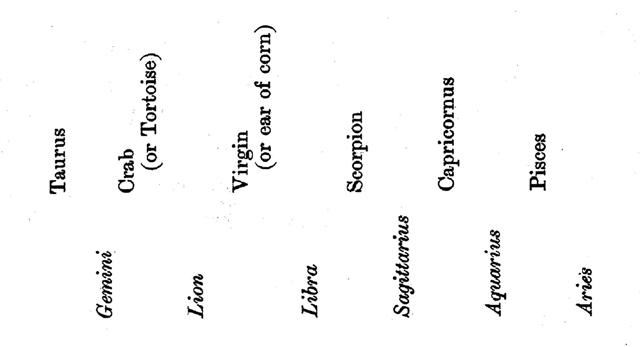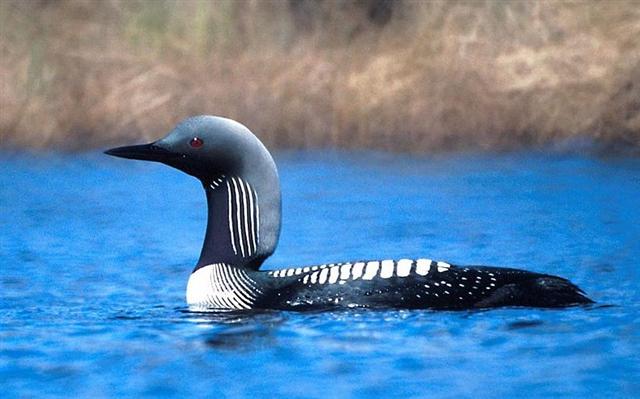Since the ancient times when our solar zodiac began to take shape, several thousands of years ago, precession has changed the circumstances and, furthermore, we cannot even assume the Babylonian zodiac was the original structure.
... Let us suppose that what happened in the case of Aries and Libra happened with six constellations out of the twelve: in other words, that the original zodiac consisted only of six constellations. The upper list not only classifies in an unbroken manner the Fish-Man, the Goat-Fish, the Scorpion-Man, and Marduk of the Babyloniana, but we pick up all or nearly all of the ecliptic stars or constellations met with in early Egyptian mythology, Apis, The Tortoise¹, Min, Serk-t, Chnemu, as represented by appropriate symbols. ¹ I think I am right about the Tortoise, for I find the following passage in Jensen, p. 65, where he notes the absence of the Crab: 'Ganz absehend davon, ob dasselbe für unsere Frage von Wichtigkeit werden wird oder nicht, muss ich daran erinnern, das unter den Emblemen, welche die sogenannten Deeds of Salè häufig begleiten, verschiedene Male wie der Scorpion so die Schildkröte abgebildet gefunden wird'. However, I suggest the 'Great One' corresponds to our Aquarius, centered at 22h:  We cannot see his pair of 'staffs', but at left is a piece of cloth (like the black cloth of winter) and at right is a flow of sweet spring water. The arms of Hevelius' Aquarius are stretched out in both directions, not straight but bent at the elbows. At left his cloth has been formed into the likeness of a mouth which is swallowing μ Aquarii, a faint star with no name. This means the cloth is taking care of the old (left) water - μ is a symbol for water. ... Witness to the order, the world of forms generated by the chief, the eye, is the sacrifice of those who violate that order. The left eye of the slain tabu-transgressors is swallowed by Kahoali'i, ceremonial double of the king and living god of his sacrificial rites ... To swallow it is to make the 'eye' (mata) vanish. ... In the morning of the world, there was nothing but water. The Loon was calling, and the old man who at that time bore the Raven's name, Nangkilstlas, asked her why.
'The gods are homeless', the Loon replied. 'I'll see to it', said the old man, without moving from the fire in his house on the floor of the sea. Then as the old man continued to lie by his fire, the Raven flew over the sea. The clouds broke. He flew upward, drove his beak into the sky and scrambled over the rim to the upper world. There he discovered a town, and in one of the houses a woman had just given birth. The Raven stole the skin and form of the newborn child. Then he began to cry for solid food, but he was offered only mother's milk. That night, he passed through the town stealing an eye from each inhabitant. Back in his foster parents' house, he roasted the eyes in the coals and ate them, laughing. Then he returned to his cradle, full and warm. He had not seen the old woman watching him from the corner - the one who never slept and who never moved because she was stone from the waist down. Next morning, amid the wailing that engulfed the town, she told what she had seen. The one-eyed people of the sky dressed in their dancing clothes, paddled the child out to mid-heaven in their canoe and pitched him over the side ...
|

